There are tons of different puffball mushrooms in North America and around the world. Some are the size of a marble, while others get as big (and sometimes even bigger) as a volleyball. Puffball mushrooms are a good edible mushroom, though not exactly top in the culinary world. They don’t have a lot of natural flavor and are best in highly seasoned and spiced recipes.
Puffball mushrooms taste great when grilled, fried, baked, or sautéed. The timing is extremely important, though, because these edible mushrooms deteriorate quickly. You may only have a day or two before they turn after foraging them. And, on top of that, if you’ve found one of the big ones, it’s a lot of puffball to be working with! It’s good to have some recipes bookmarked for the occasion so you can use or store the entire thing before it goes bad.
Supermarkets don’t stock these impressive mushrooms, and they’re pretty uncommon at food coops and specialty stores, too. These are not commercially cultivated mushrooms. Foraging is the best (and often only) option to experience their unique taste.
Puffballs are a perfect mushroom for beginner foragers because they are pretty easy to identify. There aren’t any dangerous lookalikes, either. If you’re interested in learning how to forage puffball mushrooms, check out our two foraging guides, split up by puffball size:
- Giant Puffball Mushrooms: Identification, Foraging, and Recipes
- Little Puffball Mushrooms: Identification, Foraging, and Lookalikes
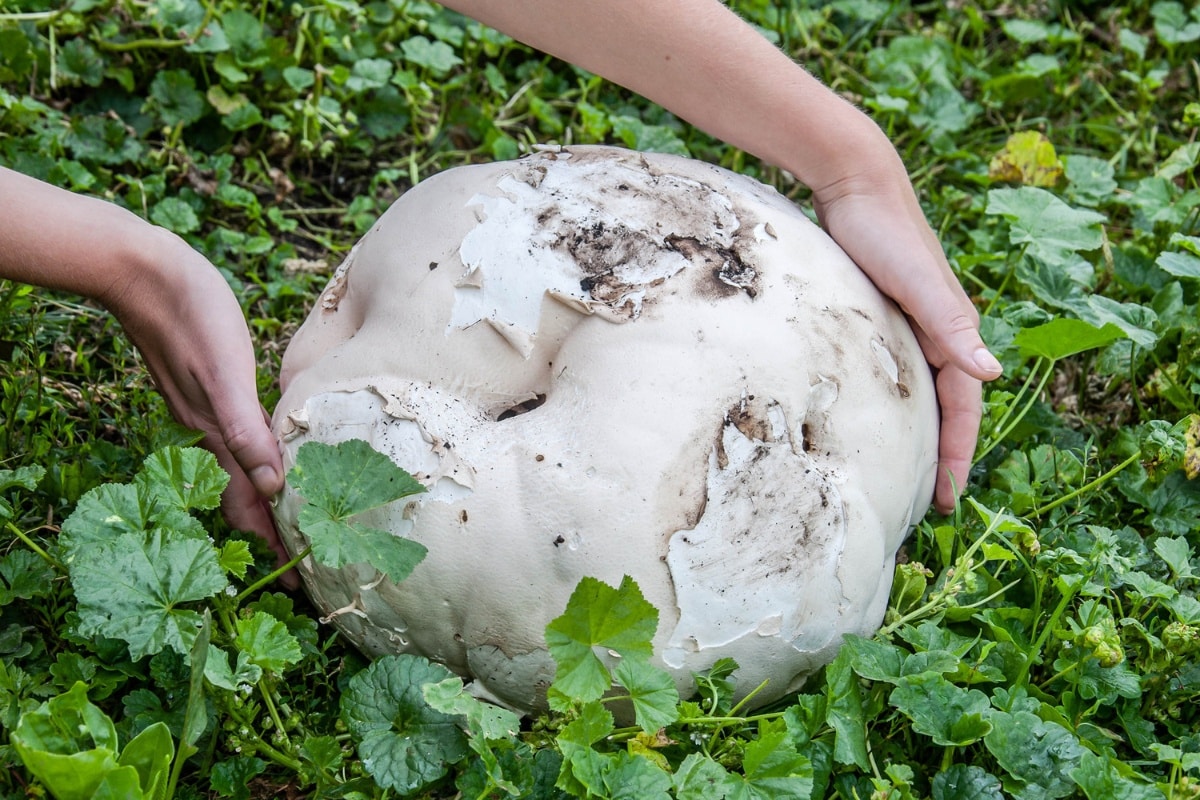
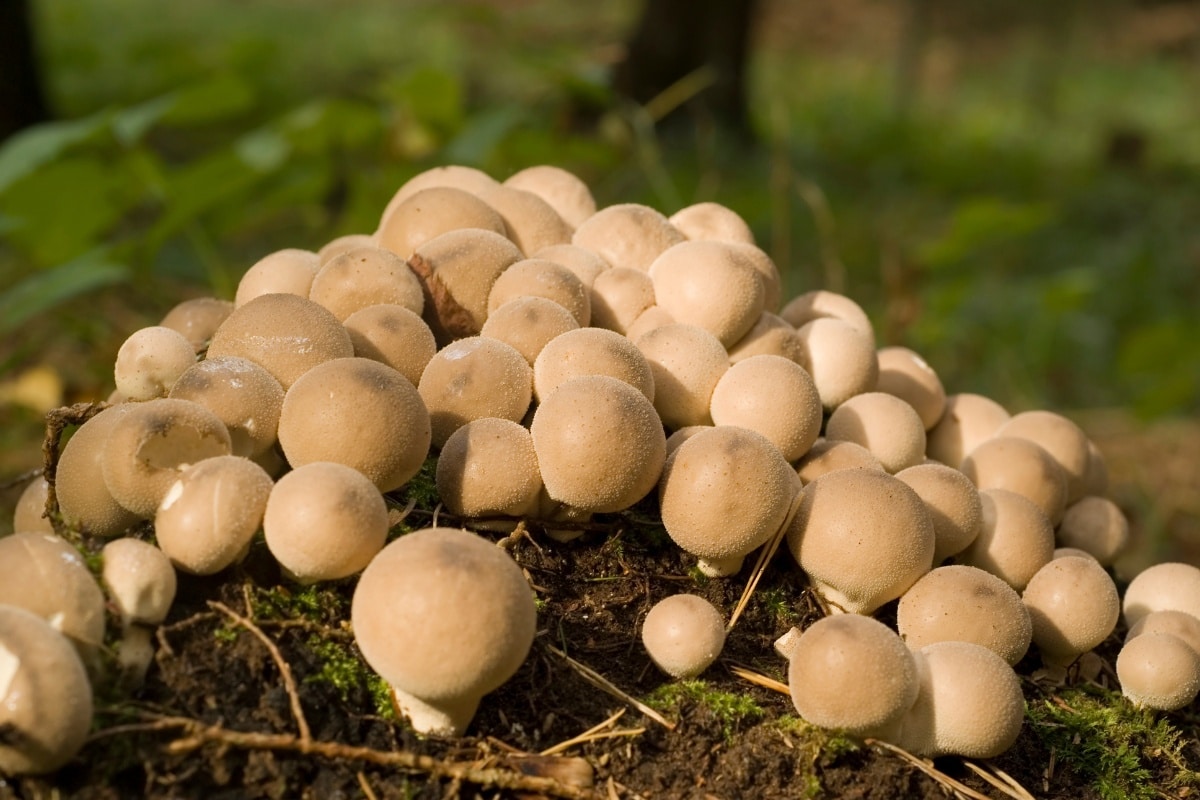
Jump to:
What Are Puffball Mushrooms
Puffballs look very different from other mushrooms. They are round, like a volleyball or ping pong ball, and they do not have caps or gills like other common species. Almost all of them lack a stem, as well. They can grow anywhere from the size of a golf ball to a beach ball, and giant ones can reach up to 25 inches across. Young edible puffballs have flesh that’s pure white throughout. The inside flesh is dense but spongy; it is not hard and solid. It’s very much like fresh mozzarella or marshmallow.
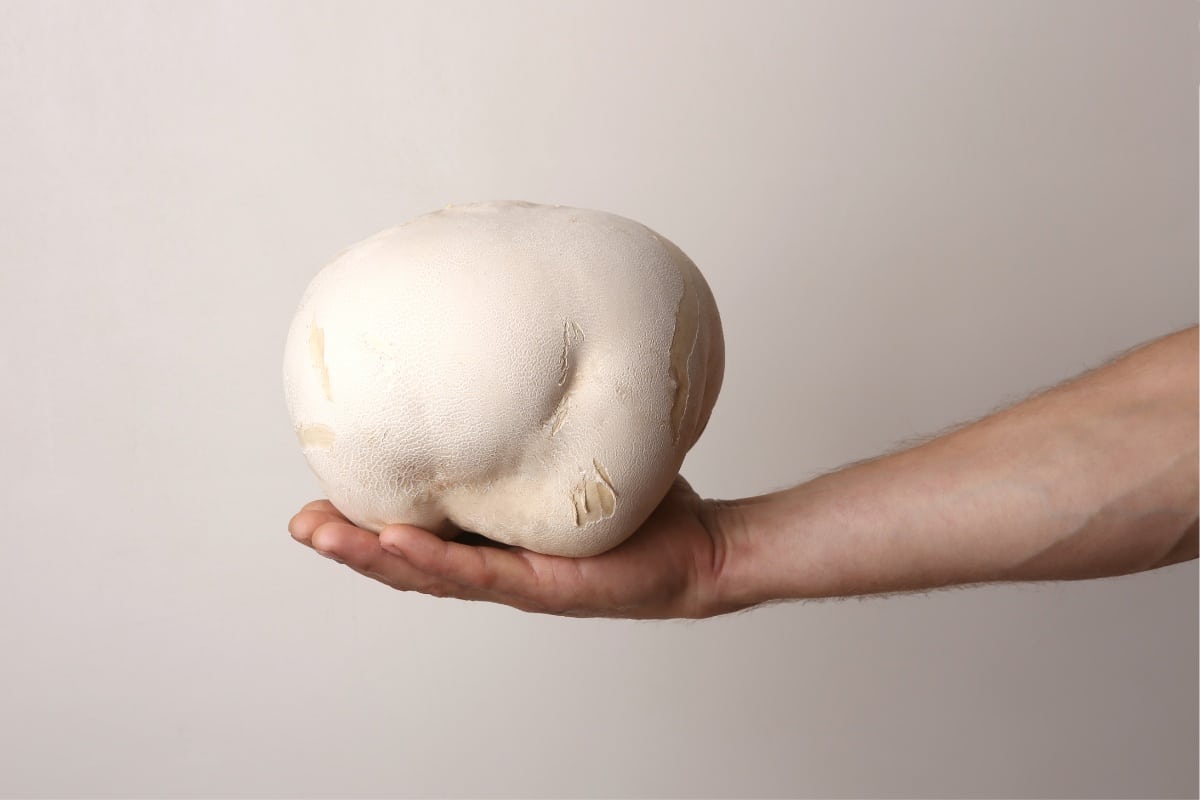
The white flesh changes to yellow as the mushroom begins to mature. Then, it turns brown to black with powdery spores. Puffballs should not be eaten if any part of the inside is yellow. Some people say you can cut around the yellow parts, but this forager doesn’t take chances like that.
A past-prime yellow-fleshed puffball isn’t going to kill you, but the gastrointestinal distress you feel might make you wish you were dead. We recommend only eating puffballs that are completely white inside, no yellow or brown, and to discard them if any bits are off-color.
Puffball mushrooms grow from the ground. They never grow on trees or on wood. They are saprotrophs and feed on decaying organic material. These mushrooms are most common in fields and meadows; they don’t usually grow in dense forests. If you see a volleyball randomly in a meadow, go check it out!
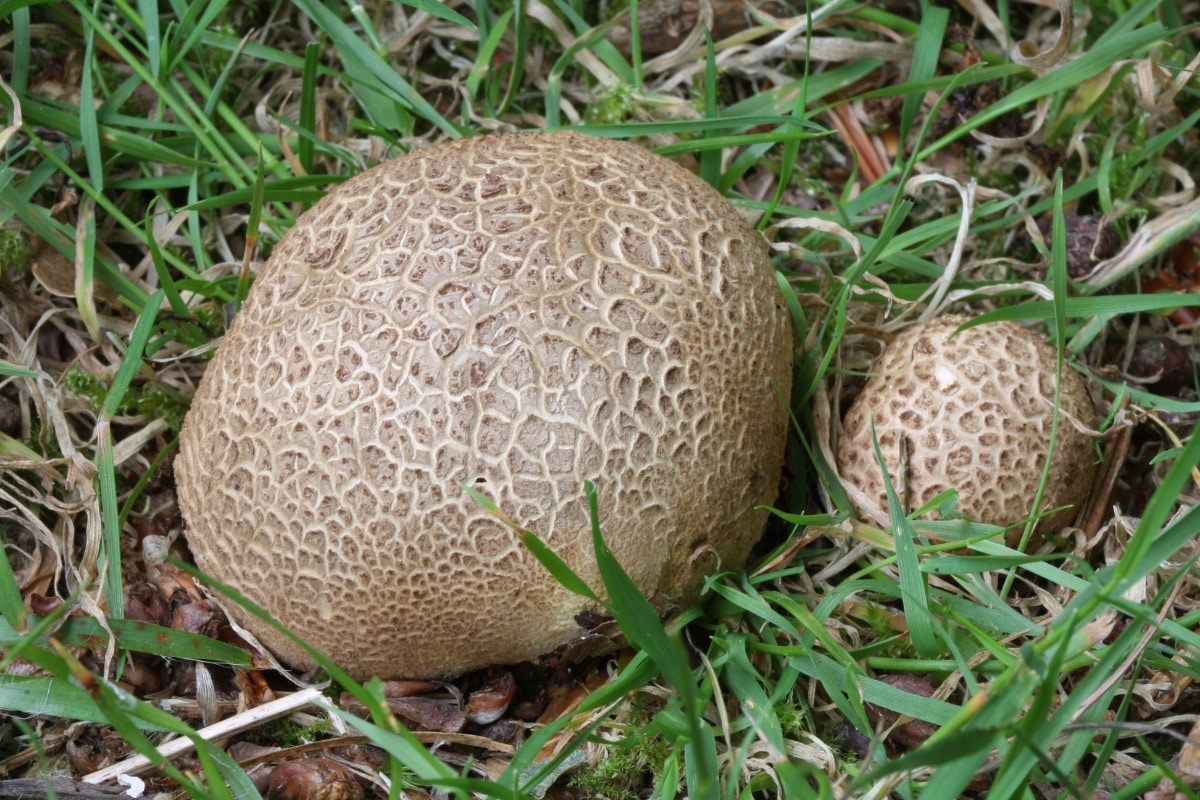
Giant puffballs usually fruit in the same place each year. If you find some, make sure to mark the spot for the following years. These mushrooms sometimes grow in huge fairy ring circles. It’s quite the sight when you have a dozen of these showing up in the yard!
Puffball mushrooms usually fruit in late summer to early fall. However, this depends on the region. Western species usually fruit in spring after heavy rains. Despite their often large size, puffball mushrooms grow quickly. They will fully mature in about a week. The smaller ones actually tend to last longer than the larger ones.
In North America, there are dozens of puffball mushroom species. All of them are edible and share pretty similar characteristics. The key points to remember are:
- Round (sometimes a bit lumpy, but always rounded)
- No stem (usually)
- No cap, no gills
- Inside flesh is white and spongy like a marshmallow
- No distinctive smell
- Grows on the ground, never on trees or wood (except for a couple species who refuse to follow the rules…)
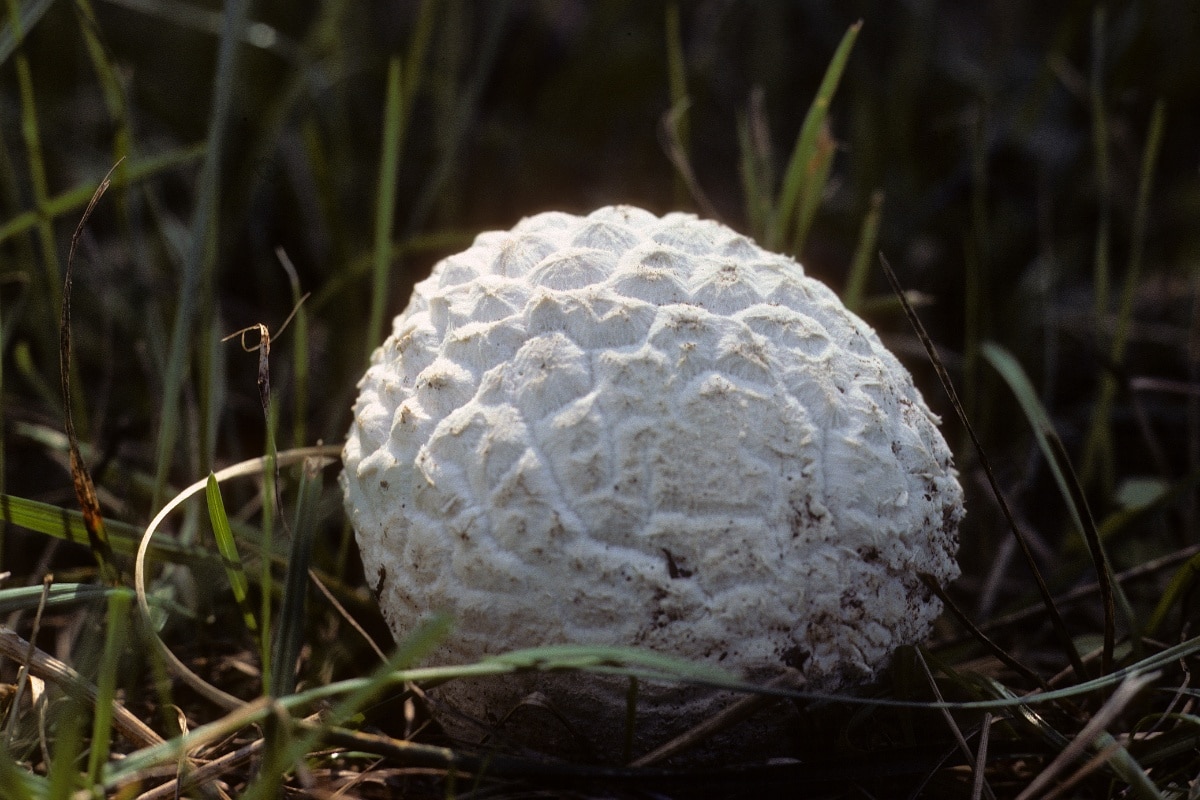
Common Lookalikes to Avoid
Several dangerous mushrooms look similar to puffballs, which makes identification a vital safety step. The most dangerous lookalikes include:
- Earthballs (Scleroderma): These toxic fungi have a hard, warty exterior and dark purple to black interior.
- Death Cap (Amanita phalloides): Young specimens might look like small puffballs – cut the ball in half to see if there are gills forming inside.
- Destroying Angel (Amanita bisporigera): Takes an egg-like shape in its original stage – cut the ball in half to see if there are gills forming inside.
- Stinkhorns: Start as white spherical “eggs” but have gelatinous layers – cut the mushroom in half to check for gills.
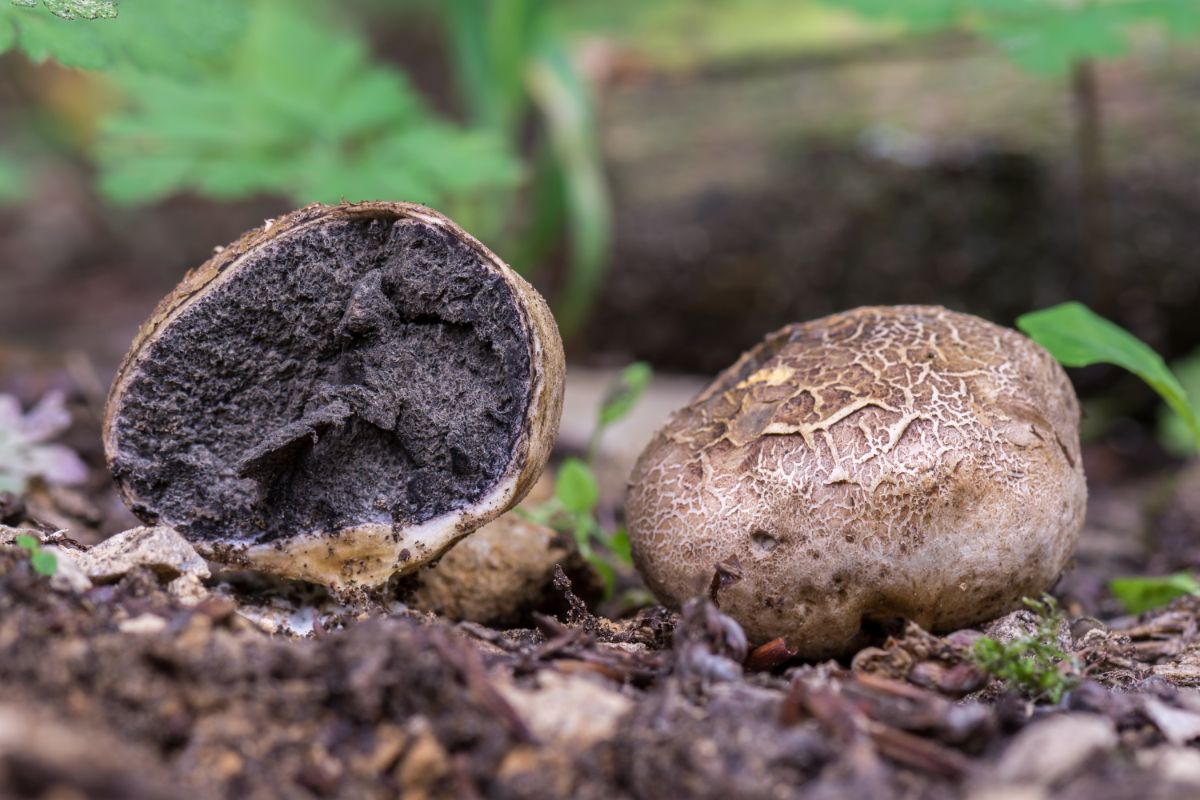
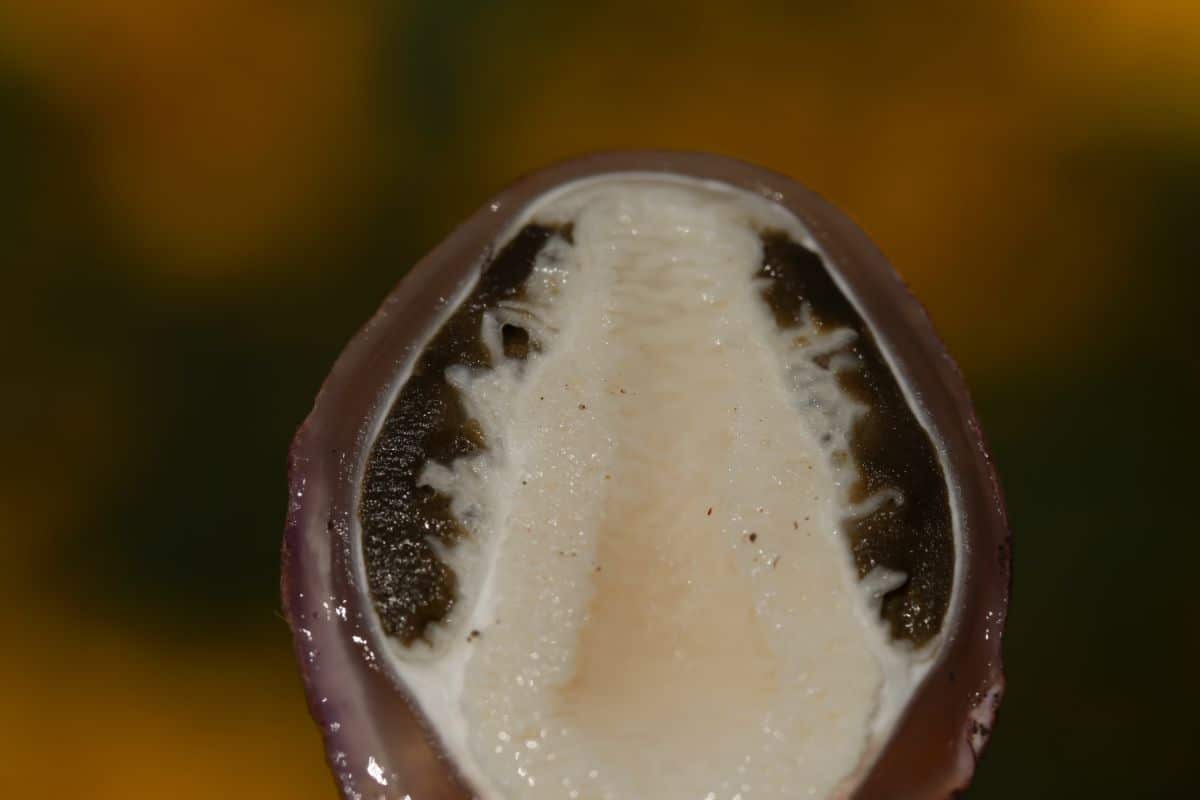
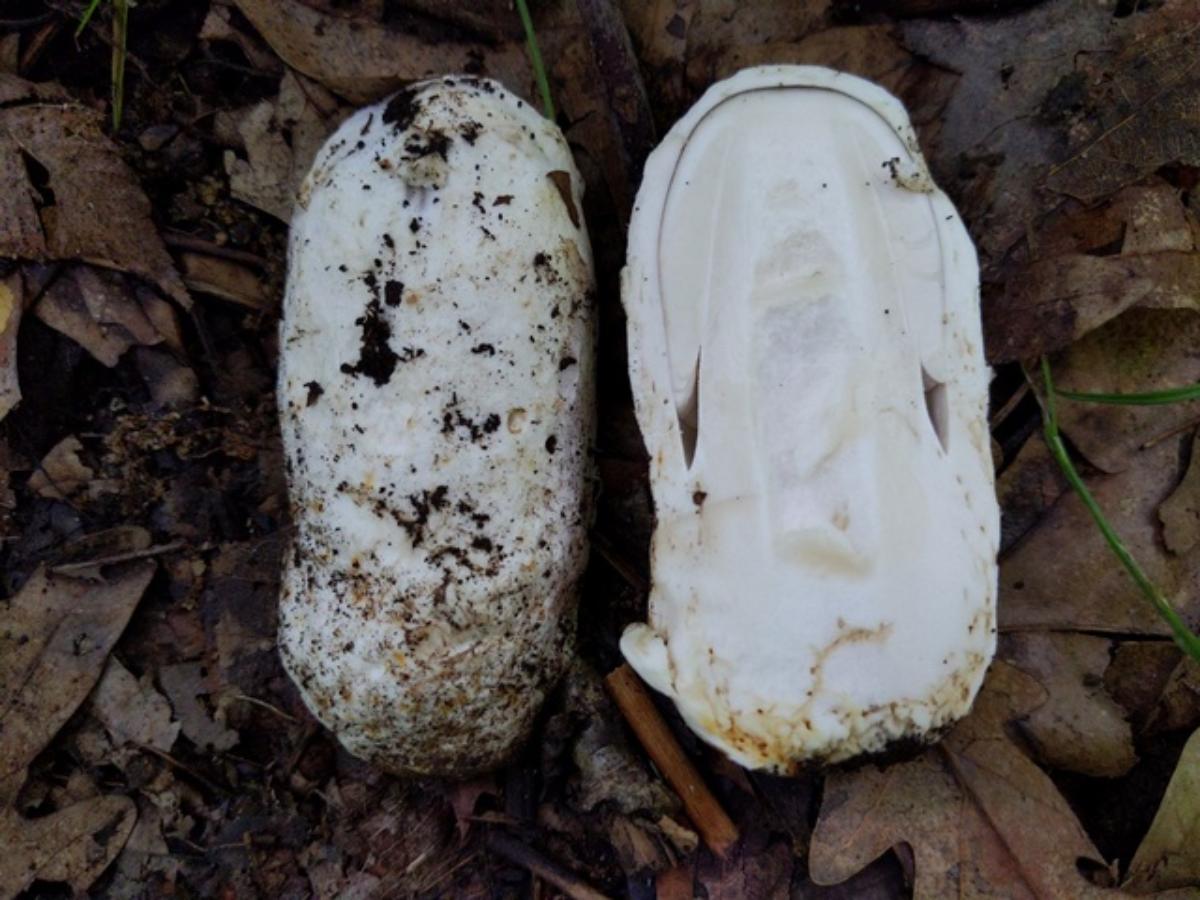
Amanita egg by Huafang on Mushroom Observer
How To Verify A Puffball Is Good To Eat
Unfortunately, as with all living things, puffballs start to decompose over time. It actually happens pretty quickly for these mushrooms. Only mushrooms that are pure white inside should be eaten.
The only way to know if you’ve found a good cooking specimen is to cut it in half. The cut test method is the most reliable way to identify edible puffballs. You should slice the mushroom vertically from top to bottom. The interior of edible puffballs is white with uniform flesh throughout that looks like marshmallow or fresh mozzarella.
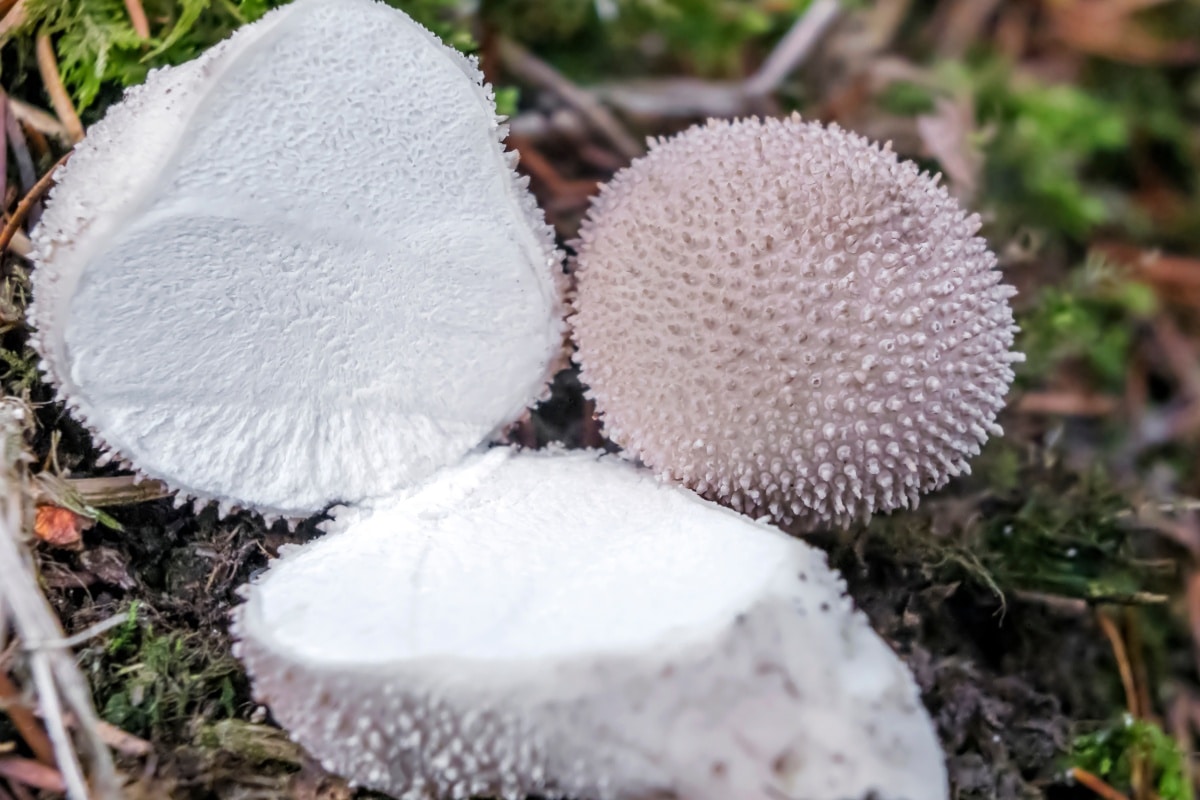
You should discard specimens that show:
- Any yellowing or darkening of flesh (this means it is past prime and will make you sick)
- Signs of developing gills or stems (this means it’s not a puffball)
- Internal patterns or structures (this means it’s not a puffball)
- Dark purple or black coloration (this means it is past prime and will make you sick)
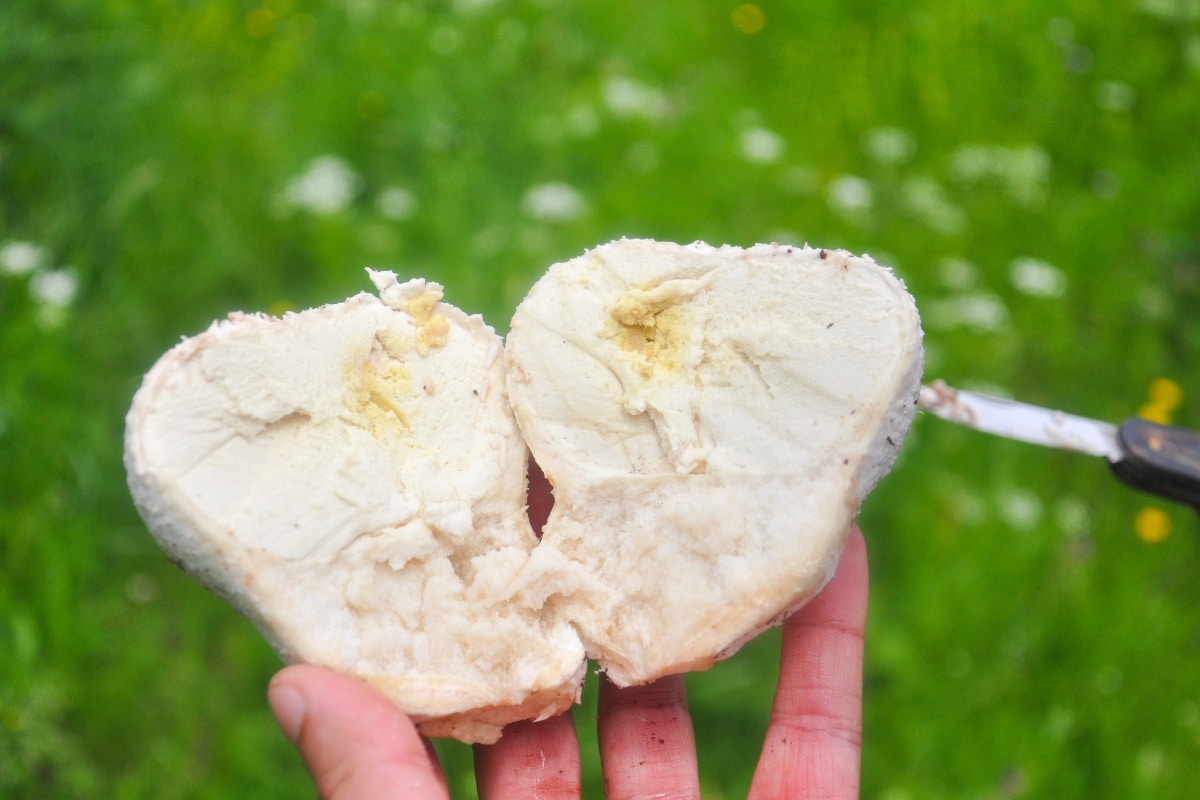
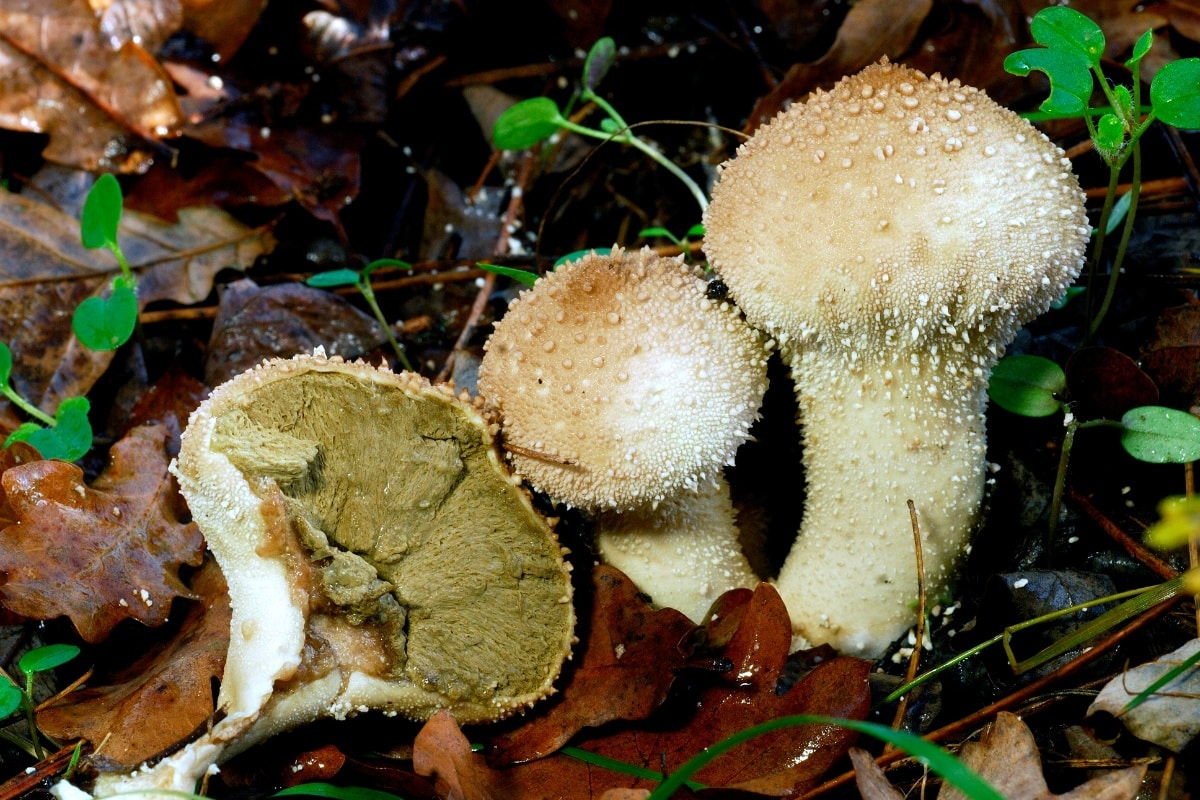
How To Harvest Puffball Mushrooms
You can cut the puffball mushroom off at the base, where it connects to the ground. Or, you can gently pull it out of the ground. Either method is acceptable. The mycelium underneath will not be harmed either way.
We always cut our puffball mushrooms in half in the field instead of waiting to get home. That way, we know whether it’s even worth bringing home! And, if it’s past gone, it stays where it is to spread spores and continue its lifecycle.
When you cut it in half, check for worm or insect damage as well. Slugs love puffballs, too!
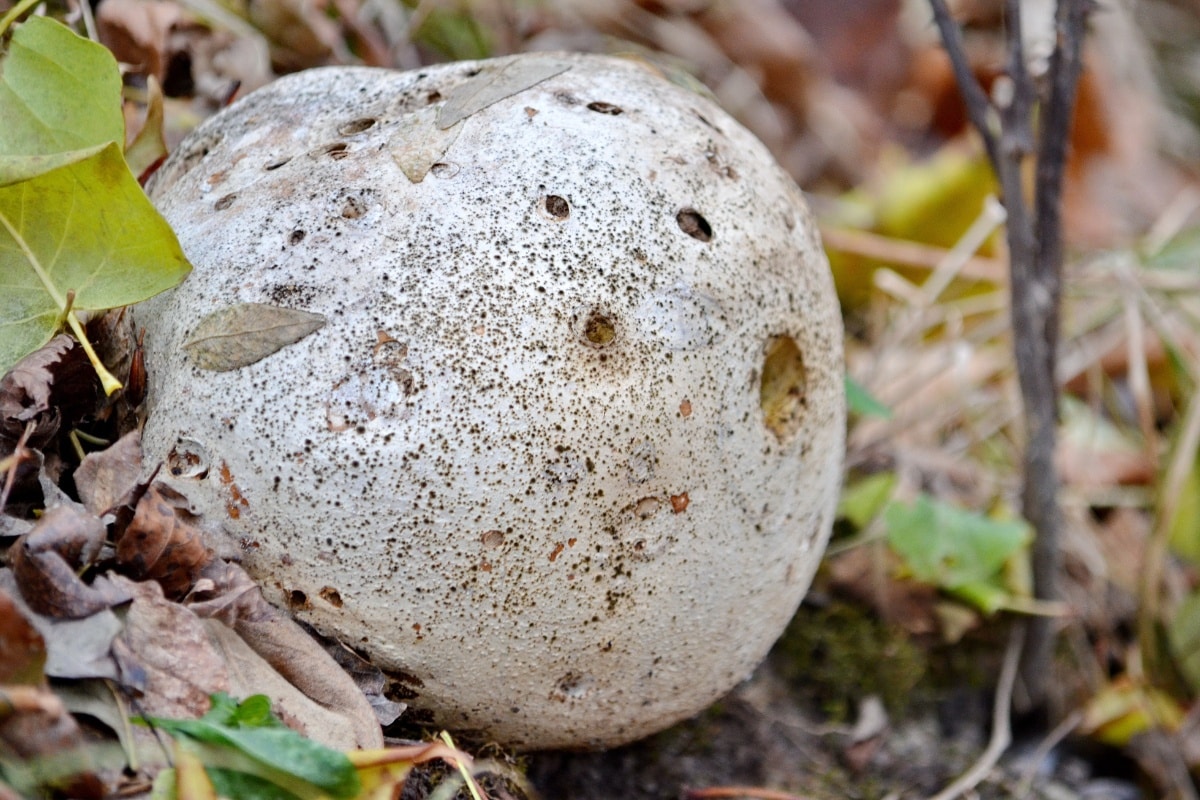
How To Store Puffball Mushrooms After Foraging
Sadly, puffball mushrooms do not have a long shelf life. In fact, it’s really very short. Once they’ve been harvested, you have a few days at most to do something with them before they start to yellow and decompose inside.
The tough outer skin of the mushroom acts as a natural shield to keep freshness, so leave it on until cooking time. It will help to extend the mushroom’s life, even if only for an extra day.
Place unwashed puffballs in paper bags in your refrigerator’s main compartment at 35-38°F (1.7-3.3°C) for short-term storage. The cool refrigerator will extend the mushroom’s usability. Do not store them at room temperature.
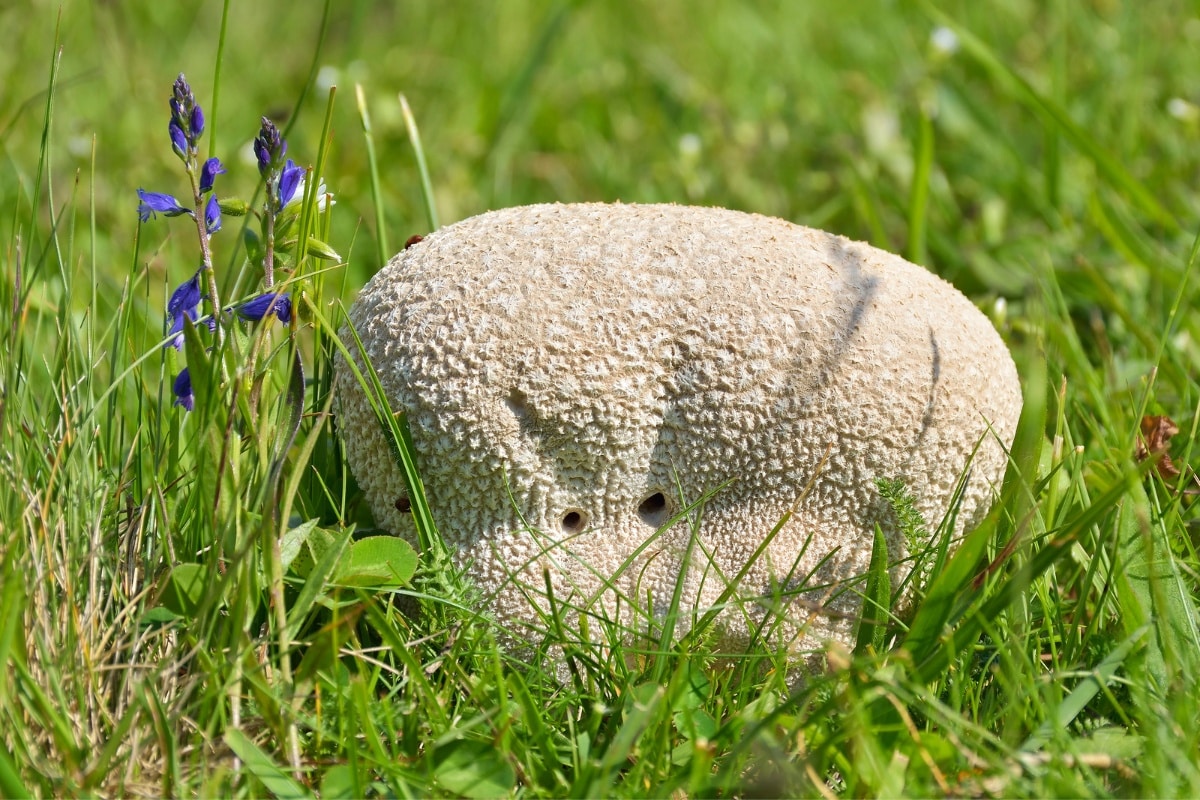
Paper bags are used because they let air circulate properly, while plastic ones trap moisture and make mushrooms spoil faster. Never store fresh mushrooms in plastic.
Whole puffballs stay fresh longer, but that creates a bit of a conundrum. Since you never know if they’re really good for eating until you cut them in half, most people cut them before storing them. If you choose not to, that’s fine, but you may be storing a puffball that is bad inside. It’s up to you, but we always cut our puffballs first to make sure they’re okay and then just plan on only storing them for a short time before cooking.
Signs of Spoilage
- Sour or unpleasant odors
- Slimy or too-soft texture
- Dark spots or overall darker color
- Fuzzy patches in white, green, or black
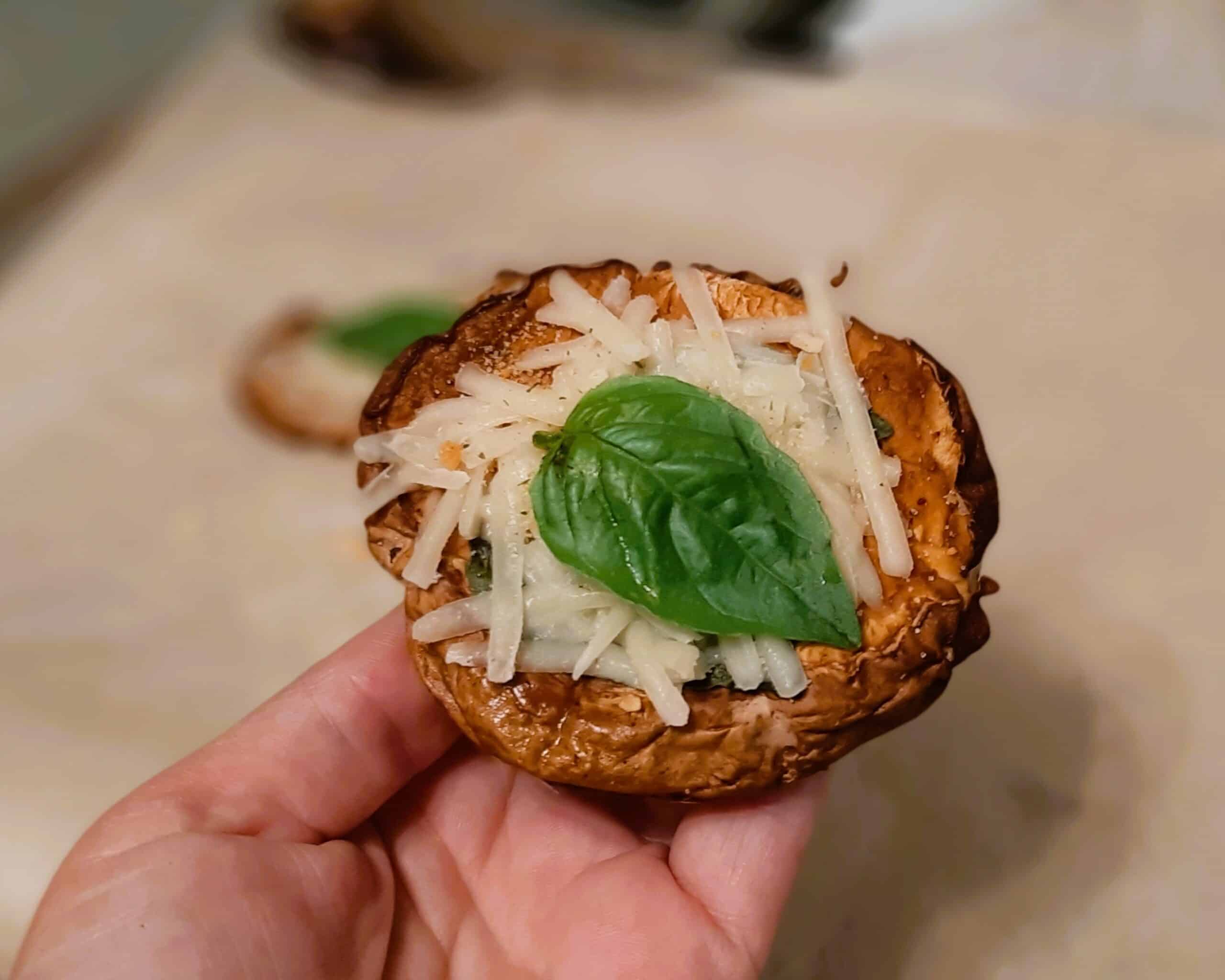
How To Prepare Puffball Mushrooms
Puffball mushrooms are pretty easy to clean, which is another great thing about this edible wild mushroom. The outer surface often needs a good scrubbing because it’s dirty or covered in debris, but this is easy to do with a wet washcloth. You can use a toothbrush for the harder stuck-on spots.
Many people peel their puffballs before cooking, and if you opt for this, then scrubbing the outside so diligently isn’t as important.
It’s best not to soak or wash the puffballs under running water. They are quite literally like sponges and will absorb the water quickly. This will make them very soggy and not great in a recipe. If you have time to let the mushroom dry out, this could be okay. Or, if you’re planning on dehydrating the puffballs, soaking doesn’t make a difference.
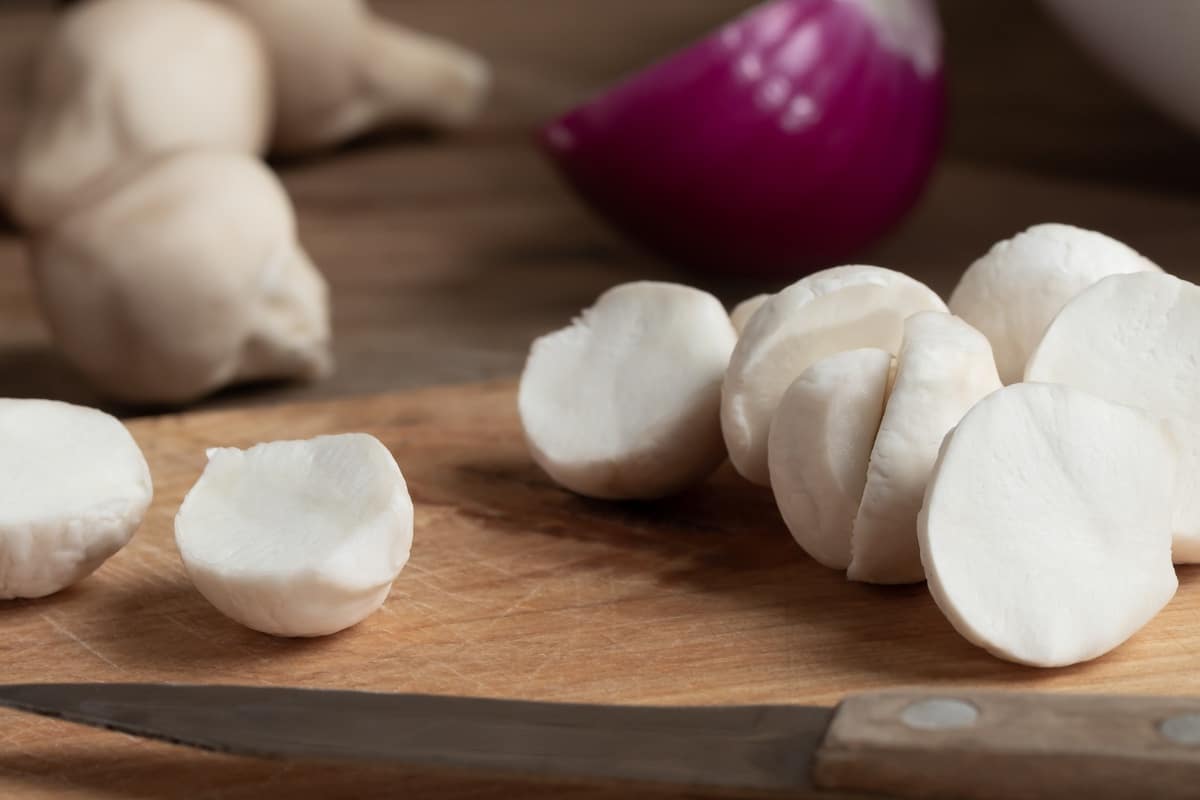
To Peel or Not To Peel
Some people opt to peel the outer skin layer off the puffball, especially the larger ones. It’s not as commonly done with the little puffballs because it’s too much of a pain in the neck. The reason for peeling is that the skin is a bit tougher than the rest of the mushroom. It’s like deciding whether to leave the skin on potatoes or apples. It’s all about texture and preferences.
The outer protective skin layer usually peels off very easily. It’s actually pretty easy to do with your hands in most cases. Other times, you’ll need a paring knife to peel it, like an apple.

How To Cook With Puffball Mushrooms
All puffball mushrooms have a mild, slightly mushroomy taste and thick, spongy texture. They will not bring much flavor to a dish but are experts at soaking up the flavor with their spongy flesh. Because of this, don’t expect puffball mushrooms to be the star of any dish. Use them as a component, and get creative!
Do not eat puffballs raw. They’re probably not going to kill you, but you might have some bad side effects. Puffball mushrooms should always be cooked.
Cooked puffballs feel like tofu or marshmallow. They soak up butter and oil really well, so don’t be shy with fats. A great way to offset lots of fats is with a splash of lemon juice or vinegar.
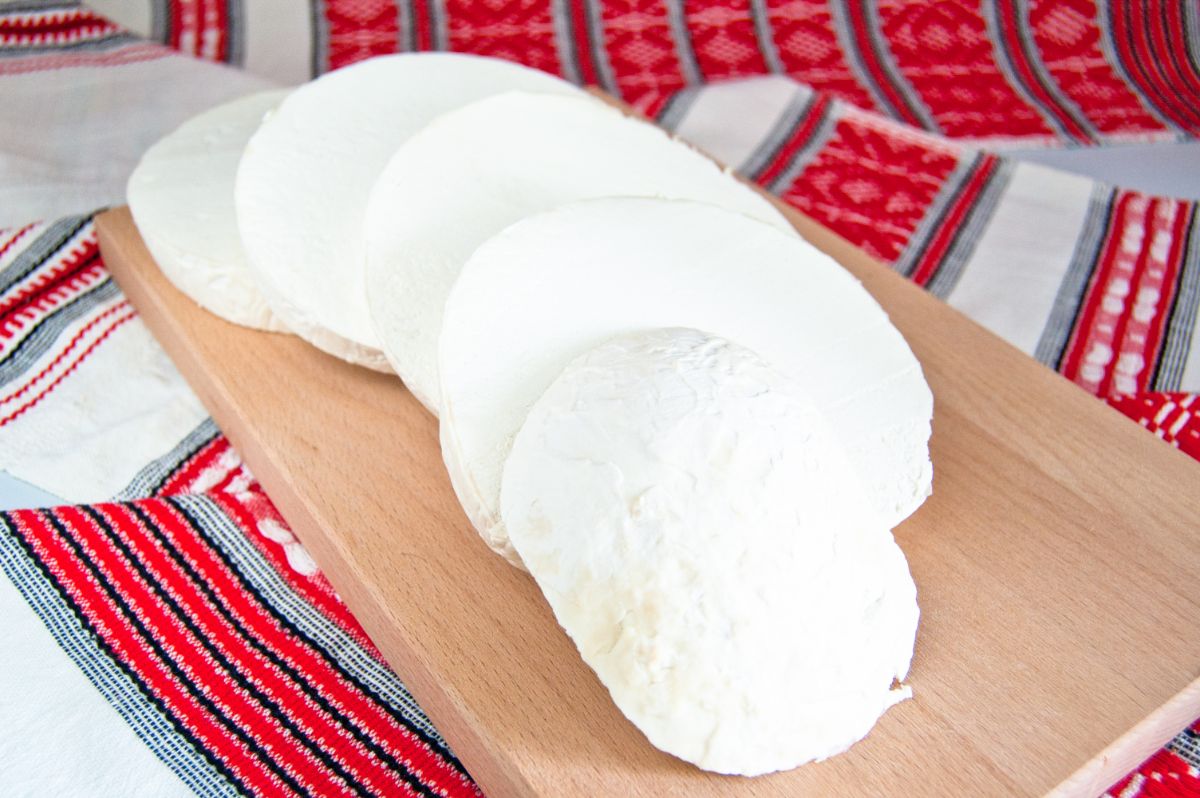
Seasoned and Pan-Fried
This is the simplest method. It’s not the best preparation method, but it is a good place to start so you can get a feel for the taste and texture of the mushroom.
Slice puffballs into 1½-inch thick pieces. For smaller puffballs, you can just cut them in half. Heat butter or coconut oil in a large skillet over medium heat. The slices need 3-5 minutes on each side until they turn golden brown. Use salt, pepper, and all your favorite spices to season it. We like to use a curry blend or lemon pepper seasoning.
Breaded and Fried
Breading the puffballs creates a crispy outer layer that is excellent in contrast to the soft, dense flesh. Dip the mushrooms in beaten egg mixed with milk and coat with seasoned breadcrumbs. Cook until golden brown, about 3-5 minutes on each side. You can eat the fried puffballs plain or dip them in a sauce, like marinara, BBQ, or hot sauce.
Breaded and Baked
For a healthier alternative, bake the breaded mushrooms instead of frying them. Dip the mushrooms in beaten egg mixed with milk and coat with seasoned breadcrumbs. Preheat the oven to 400F and bake for 30 minutes, flipping over halfway through for even cooking and browning (smaller puffballs will need less time). After removing the mushrooms from the oven, coat them in BBQ, buffalo, or a sweet & sour sauce.
Grilling
Grilled puffballs pick up amazing smoky flavors. Cut the mushrooms into 1½-inch slabs and brush them with olive oil and minced garlic. Grill them on medium heat for 5-7 minutes per side. You do have to be careful with the cooking time as they can become tough if grilled too long.
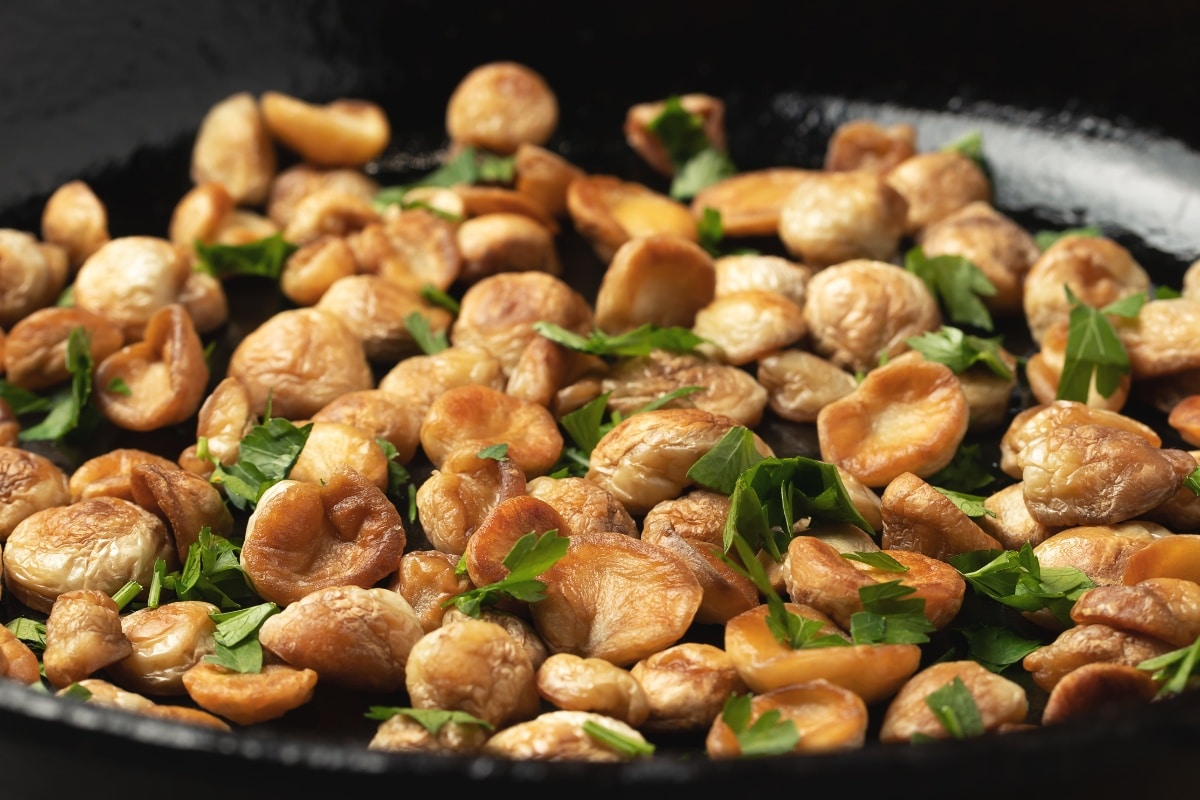
Our Favorite Puffball Mushroom Recipes
Long-Term Storage For Puffball Mushrooms
Freezing
Puffball mushrooms should be blanched or cooked before freezing. Freezing them raw really messes up their texture.
Cut the mushroom into the desired size pieces. Give these pieces a quick 3-minute blanch in boiling water, then cool them in an ice bath for 5 minutes. Drain the pieces well in a colander or strainer.
Lay them out on a parchment-lined baking sheet without letting them touch each other. Pop them in the freezer for 2 hours, then pack them into airtight containers or freezer bags. Make sure to write the date on each container. Frozen puffballs are generally good for up to 6 months.
Dehydrating
Drying is one of the best ways to preserve puffball mushrooms. They dehydrate really well, and the texture is usually pretty good when rehydrated.
Put clean slices on the trays. Set the dehydrator to 120ºF/49ºC. The process takes 8-12 hours – keep going until the pieces are completely dry and brittle. You can also dehydrate them by sun-drying. Put your slices on mesh screens and turn them now and then for 24 hours so they dry evenly.
You can keep the dried puffball pieces whole or grind them into a powder. Many people powder the mushrooms and then use them as a thickener or bulk addition in soups, stews, and gravies.
After they’re thoroughly dried, use a high-powered blender to turn the puffball pieces into powder. To get more flavor, try toasting the dried slices at 325°F until they’re barely golden before grinding. Keep the powder in airtight containers away from sunlight, and don’t forget to label them.
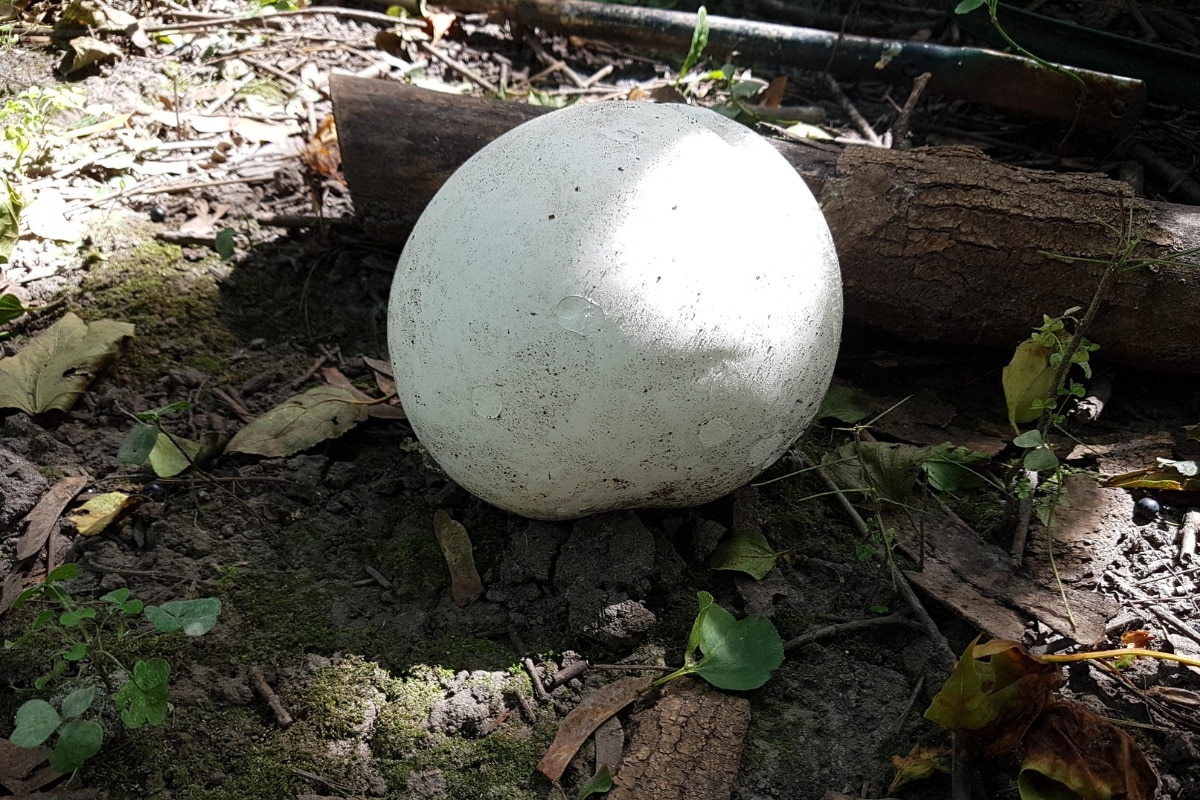
Common Questions About Puffball Mushrooms
How can I tell if a puffball mushroom is safe to eat?
Simply cut the mushroom in half vertically. The interior should be pure white and homogeneous; it will resemble marshmallow or fresh mozzarella. If you see any yellowing, darkening, or signs of developing gills or stems, discard it.
Where and when can I find puffball mushrooms?
Puffballs typically grow in open, grassy areas like meadows, pastures, and forest edges. The prime foraging season is from late summer through early autumn, but it depends on where you live. The western states often have more puffball species fruiting in spring.
How should I store fresh puffball mushrooms?
Store unwashed puffballs in paper bags in your refrigerator. This method allows for air to circulate properly and prevents excess moisture buildup.
Can I preserve puffball mushrooms for later use?
Yes, you can preserve puffballs by freezing or drying.

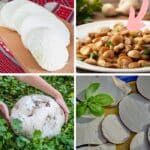
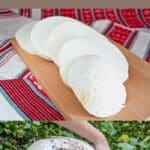
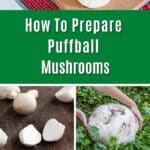
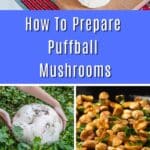
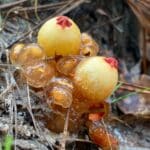
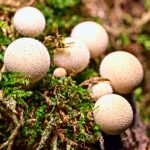
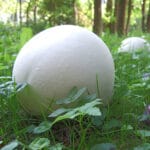
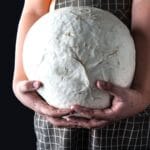
Leave a Reply